47 F. high yesterday in the Twin Cities.
34 F. average high for February 28.
43 F. high temperature in the metro area on February 28, 2016.
March 1, 1966:
The Blizzard of '66 hits Minnesota and lasts 4 days. Aitkin received 23
inches of snow. The snow depth at International Falls reached a record
37 inches by the end of the storm.
Red Winged Blackbirds Return 2 Weeks Early!"No
winter lasts forever; no spring skips its turn" wrote Hal Borland. The
coldest 90 days of the year, on average, are behind us now.
Meteorological spring starts today, which seems like cheating, after the
relatively easy winter we just muddled through.
According to the
Minnesota DNR's "Winter Misery Index" and the Midwestern Regional
Climate Center, Minnesota - and the eastern 2/3rd of the USA - just
enjoyed a "mild" winter. No kidding.
"I saw my first Red Winged
Blackbird at Bredeson Park in Edina this morning. That's the earlier
ever!" Jack Falker e-mailed me yesterday. "Just watch the birds because
they know what's happening instinctively, as opposed to a lot of
clueless humans" Jack added.
A quick burst of slush early today
(1-2" for many spots - more over western Wisconsin) gives way to
flurries by afternoon with highs in the 30s; average for March 1. A few
chilly days on tap, then 50s by next Sunday. ECMWF (European) model data
hints at 60F late next week.
Wet snow can't be ruled out next
Monday, but anything that falls should melt quickly. Lawns are greening
up but March is capable of rude, slushy surprises.
Stupid fake spring.
March: In Like a White Leopard.
We should wake up to a couple inches of slushy snow - enough to make it
look like winter for a time today. Old Man Winter is toying with us -
temperatures may be close to 60F by Sunday. Map above:
Twin Cities National Weather Service.
Nuisance to Plowable.
12 KM NAM guidance suggests the best chance of a few inches of snow
(enough to shovel and plow) comes from the east side of St. Paul to
Eau Claire and Green Bay today, along the northern edge of the same
storm that sparked tornadoes late Tuesday from Illinois to Arkansas.
Snowfall potential: NOAA and Tropicaltidbits.com.
Midwestern Regional Climate Center: "Mild Winter" for Much of the USA. The
MRCC
has an "Accumulated Winter Season Severity Index", which agrees with
the Minnesota DNR's "Winter Misery Index". It wasn't much of a winter.
Details: "
Winter seasons have significant societal impacts across
all sectors ranging from direct human health and mortality to commerce,
transportation, and education. The question “How severe was this
winter?” does not have a simple answer. At the very least, the severity
of a winter is related to the intensity and persistence of cold weather,
the frequency and amount of snow, and the amount and persistence of
snow on the ground. The Accumulated Winter Season Severity Index (AWSSI)
was developed to objectively quantify and describe the relative
severity of the winter season."
Australian Bureau of Meteorology Issues "El Nino Watch". It's baaack. Here are the
details:
"
The El Niño-Southern Oscillation (ENSO) remains neutral. However,
recent changes in both the tropical Pacific Ocean and atmosphere, and
climate model outlooks surveyed by the Bureau, suggest the likelihood of
El Niño forming in 2017 has risen. As a result, the Bureau's ENSO Outlook
status has been upgraded to El Niño WATCH, meaning the likelihood of
El Niño forming in 2017 is approximately 50%. All atmospheric and
oceanic indicators of ENSO are currently within neutral thresholds.
However, sea surface temperatures have been increasing in the eastern
Pacific Ocean and are now warmer than average for the first time since
June 2016, while the Southern Oscillation Index (SOI) has been trending
downwards..."
Not Much Misery in February.
No surprise - we didn't add any points to the Winter Misery Index this
month. That's how mild (and snow-free) it's been. Details via the
Minnesota DNR: "...
As of February 27, 2017 the WMI for the 2016-17 winter is at 48 points:
23 points for cold, 25 points for snow. This is enough for this winter
to be in the "mild" category. Seven more points are needed for this
winter to be categorized as "moderate." February 2017 is poised to have no
Winter Misery Index points. The only other time there has been no WMI
points in February was 1964. There's been only .3 (three tenths) of an
inch of snow for February 2017 and if no more snow falls by the end of
the month, this would tie the least snowiest February on record.
February 1894 also had only .3 (three tenths) of an inch of snow. There
has also been no minimum temperature of zero or colder in February 2017
as well..."
 Chicago is 1 Day Away From Breaking a Weather Streak That's Lasted 146 Years
Chicago is 1 Day Away From Breaking a Weather Streak That's Lasted 146 Years. No kidding - yesterday the concern wasn't snow and ice, but severe storms and even isolated tornadoes nearby.
ScienceAlert has the details: "...
But
this year, Chicago has gone the entirety of January and February
without any snow on the ground - and isn't expected to before the month
closes Tuesday night. According to the local National Weather Service
Station, that's a first in the city's 146-year record. Of course, the
unusually warm weather hasn't been concentrated in Chicago. NOAA hasn't
yet released its official report on the month's weather (usually the
third coldest, after January and December), but much of the East Coast
and Midwest has experienced unusual or record-breaking warmth..."
No Snow Chicago: Windy City Having Non-White Winter for First Time in Nearly 150 Years. The Windy City may have to change it's name -
NBC Chicago has details on the winter that wasn't: "
Not
just because the president of the United States mentions the city every
day or because the beloved Cubs won the world series last fall but —
for the first time in 146 years
— Chicago is going through a snow drought with not a flake at all in
the months of January and February It's especially notable in a city
known for its brutal winters. Chicago averages over 40 inches of snow per winter and the city always preps and for months revving up "a fleet" of snow plows and salt trucks to service over "280 snow routes,"
according to the city's website. So the last two months have thrown
Windy City residents for a loop, with temperatures hitting spring-like
highs — without a lick of snow..."
Photo credit: "
People at the Chicago Zoo on Feb. 19, 2017." Jim Schulz via Chicago Zoological Society.
60 on Sunday?
It's not out of the question - if the sun stays out most of the
afternoon. Today looks like winter, but there should be a spring in your
step by the weekend, and much of next week as temperatures run 10 F.
above average. ECMWF data for MSP: WeatherBell.
Beware the Ides of March.
Don't underestimate March - even though I don't see any huge
snow-makers on the horizon, it can still snow hard this month. The
beauty of a March snowfall? It's gone within a day or two; the sun is
just too high in the sky for snow cover to linger for long. A fairly
mild zonal flow continues into mid-March, cold and stormy weather most
likely for the Pacific Northwest and New England.


March Comes In Like an Iguana East of the Mississippi.
OK. the whole lamb/lion thing just didn't work - I had to come up with a
warm weather animal. And who doesn't love iguanas? Temperatures on
Wednesday are forecast to be 20F above average (again) across much of
the eastern USA - more records will fall.
Map credit:
Climate Reanalyzer.
More of the Same For Most of USA.
NOAA CPC
is out with a revised outlook for March temperatures, and much of the
nation is expected to trend warmer than average, with the greatest
potential for warm anomalies over the southern Plains. Only the Pacific
Northwest is forecast to be colder than average.

Spring in February: Why Was This Winter so Warm?
UMN Experts Weigh In. Many people want a simple, TV-soundbite answer,
when the reality is more complex. But CO2 at 408 ppm may be a big factor
in the ongoing warming trend. Here's an excerpt from
Minnesota Daily: "
Though
February has been a record-breaking warm month for Minnesota, experts
say the temperatures can’t be solely attributed to climate change.
Minnesota is leading the continental United States in how quickly it’s
warming. But experts say warm temperatures this winter can be attributed
to a couple main factors. Historically, there have been random bursts
of warm weather during Minnesota winters. But climate change has
amplified these occasional spikes, including this year’s, said Kenny
Blumenfeld, a Minnesota Department of Natural Resources climatologist.
“There have been previous warm streaks in February but because of a
long-term warming trend, this year had a little extra oomph,” Blumenfeld
said. This long-term warming trend has sped up during the past 50
years, which Blumenfeld attributes to greenhouse gases being unable to
escape in the atmosphere..."
Life-Saving Tornado Technology Getting Stuck in Congress.
Today's Doppler radars take several minutes at multiple scan levels to
stitch together a 3-D composite of the atmosphere, allowing
meteorologists to see areas of violent rotation. "Phased-array" radars
create an instantaneous, 3-D snapshot of what's happening.
KTUL.com in Tulsa, Oklahoma has a timely story; here's an excerpt: "...
There’s
new technology at the National Severe Storms Lab in Norman that has
shown the ability to allow extra minutes of lead time. Precious minutes
that could be part of the solution. It’s something we’ve never seen
before. Tornadoes on radar in their earliest stages of formation.
“Phased array radars have been around for a long time,” says Kurt Hondl,
a researcher at N.O.A.A. “Primarily for use by the military, the
simplest way to think about it are your ears as a phased array system.
If you close your eyes and somebody walks around the room, you can still
tell where the voice is coming from.” “It would be lifesaving,” Weir
says. “It would be immensely valuable, especially with the schools that
lost so many children here...”
 Phased-Array Radar Could Improve Tornado Prediction Times
Phased-Array Radar Could Improve Tornado Prediction Times.
IEEE Spectrum
has a good backgrounder piece on the benefits of phased-array; the U.S.
Navy has been using it to track missiles - it only makes sense to see a
trickle-down from military to the consumer sector: "...
A
phased-array radar can capture the scene much more quickly. This type of
radar system features a fixed, flat antenna composed of thousands of
transceiver elements sending and receiving pulses at the same time. The
relative delays between the pulses shape the direction of the beam
radiating from the array. This electronically steered beam can scan the
whole sky in less than a minute. Forecasters would also be able to
instantly redirect it to focus on specific areas. "It gives forecasters
information almost like a movie, as opposed to taking snapshots of the
atmosphere," says Doug Forsyth, who leads radar research at the NSSL.
U.S. Navy ships have used phased-array radars for decades to detect
missile threats. In fact, since 2003, the NSSL has been testing an
antenna donated by the Navy. A group of National Weather Service
forecasters are invited to participate in the trials, which include
yearly mock tests on real tornado data..."
Photo credit: Mobile, phased-array Doppler radar scanning a supercell in Kansas during VORTEX-2 on June 9, 2009. Coutesy:
University of Oklahoma, Norman.
Is February Washington D.C.'s New May? Freak Thunderstorms Pound Area for Second Straight Year. Ian Livingston at
Capital Weather Gang explains: "...
While
the tornado-producer was the strongest storm, the area was peppered by
several other severe storms. The Weather Service logged 19 reports of
large hail within 100 miles of D.C. A hail event of this magnitude
during February has never been previously observed around Washington. It
occurred at least four weeks earlier than anything of similar intensity
dating back to the 1950s. Its rarity stems from the near-record warm
air that was in place — some 25 degrees above normal. In addition to the
tornado, hail and damaging winds across our region, this system brought
two rare February tornadoes to Pennsylvania, and the first tornado on record in the month of February to Massachusetts. Before this storm, New England had witnessed only two other tornadoes across all winter months in its historical records..."
Image credit: "
Three-dimensional view of supercell updrafts on a storm which would soon after produce a tornado near La Plata."
Don Paul: "Twister" and the State of Tornado Chasing. A friend in Buffalo, meteorologist Don Paul, wrote a good article for The Buffalo News; here's an excerpt: "...In this next year, it’s remote data from space which may well be the most important new tool for researchers. The GOES-R satellite, still in test mode,
has the ability to do rapid scan extremely high resolution images of a
focused small area every 30 seconds. Such imagery can’t see everything
inside storm cells and supercells, but the change in cloud top
configuration, cloud top temperature, visible gust fronts out ahead of
the storm, and the satellite’s superior lightning detection will provide
far more rapid data on changes in storm development than can be
supplied by the network of NWS Dopplers, which take about six minutes to
complete a complete set of scans of many different altitudes within a
storm to determine a more complete picture of its structure. As I’ve
written, the U.S. still lags in our global weather models in many
respects compared to the European Center and the British Met Office.
When it comes to the study of severe local convection, though, we are
unquestionably the world leader. We have to be. Our tornado frequency,
due to our geography, is incomparably higher than that of any other
continent..."
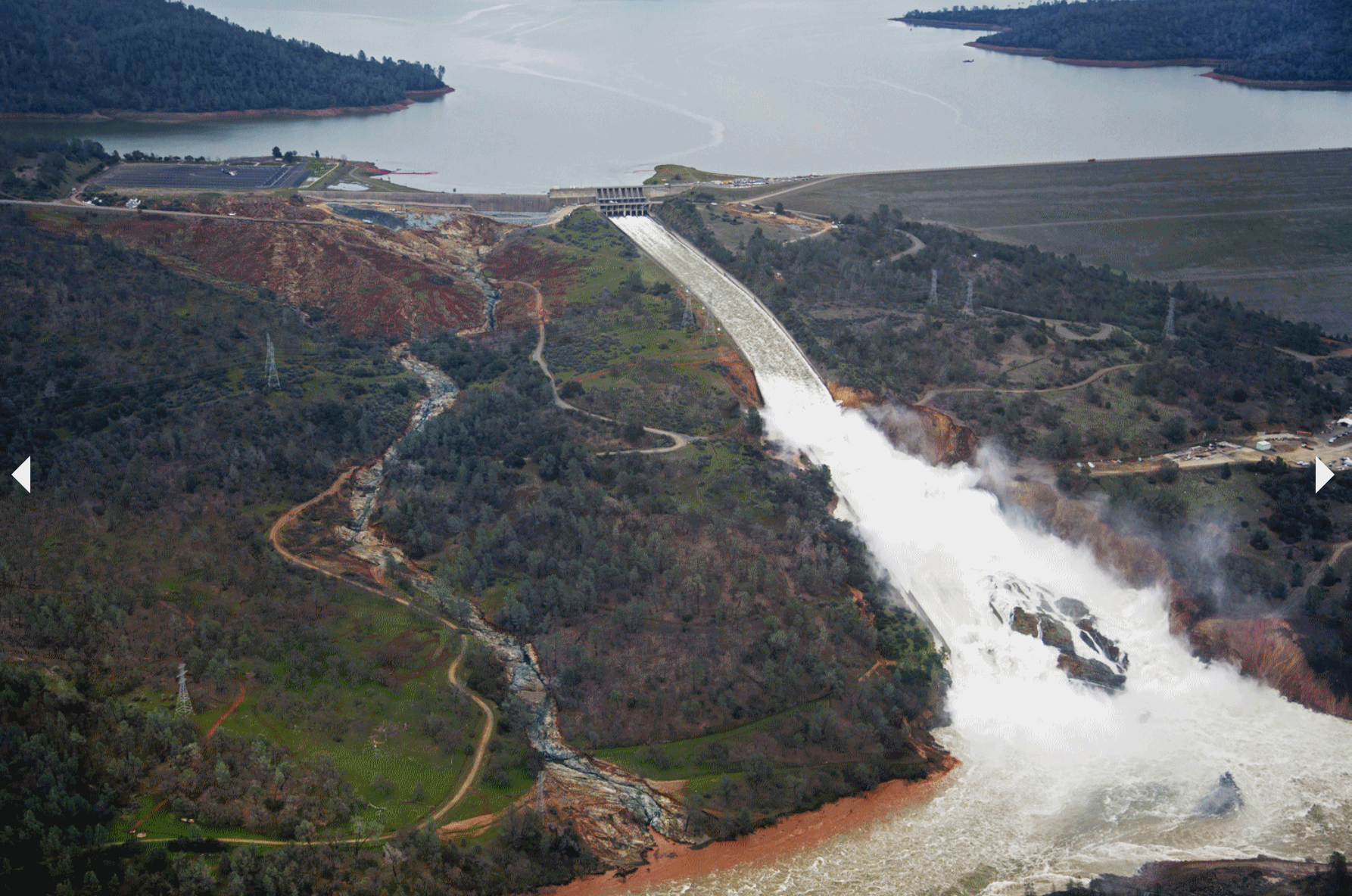 Have We Underestimated the West's Super-Floods?
Have We Underestimated the West's Super-Floods?
This winter is redefining wet for California and the entire west coast
of the USA, but it pales in comparison to previous deluges. Here's an
excerpt from
High Country News: "...
In
California, too, super-floods may be more common than previously
thought. United States Geological Survey hydrologist Michael Dettinger
and UC Berkeley paleoclimatologist B. Lynn Ingram have studied the
paleo-flood record across a broad swath of California and discovered
that such floods happen at least every 200 years, and maybe more
frequently. The last one was in 1862.
Thousands of people died, towns were submerged and the state’s economy
was devastated, yet it was nowhere near the worst: One flood in the
1600s was at least twice as big..."
Photo credit: "The damaged Oroville Dam spillway flows out of Lake Oroville at 100,000 cubic feet per second (cfs)." Dale Kolke / California Department of Water Resources.
Dale Kolke / California Department of Water Resources
 Smaller Storms, Over Time Can Cost More Than Extreme Infrequent Events. Details via AGU, American Geophysical Union: "Global
climate change is being felt in many coastal communities of the United
States, not always in the form of big weather disasters but as a drip,
drip, drip of nuisance flooding. According to researchers at the
University of California, Irvine, rising sea levels will cause these
smaller events to become increasingly frequent in the future, and the
cumulative effect will become comparable to extreme events such
as Hurricane Katrina or Superstorm Sandy. “Catastrophic storms get a lot
of media attention and are studied, but we wanted to know more about
the non-extreme events,” said Amir AghaKouchak, associate professor of
civil and environmental engineering at the University of California
Irvine (UCI) and co-author of a new study on cumulative hazards in Earth’s Future, a journal of the American Geophysical Union.
Smaller Storms, Over Time Can Cost More Than Extreme Infrequent Events. Details via AGU, American Geophysical Union: "Global
climate change is being felt in many coastal communities of the United
States, not always in the form of big weather disasters but as a drip,
drip, drip of nuisance flooding. According to researchers at the
University of California, Irvine, rising sea levels will cause these
smaller events to become increasingly frequent in the future, and the
cumulative effect will become comparable to extreme events such
as Hurricane Katrina or Superstorm Sandy. “Catastrophic storms get a lot
of media attention and are studied, but we wanted to know more about
the non-extreme events,” said Amir AghaKouchak, associate professor of
civil and environmental engineering at the University of California
Irvine (UCI) and co-author of a new study on cumulative hazards in Earth’s Future, a journal of the American Geophysical Union..."
Photo credit: FEMA. "
The
effects of climate change are being felt now in American cities. With
the steady rise in sea level over the past few decades, events such as
an especially strong tide can result in flooding in coastal regions, a
new study finds."
Humans Are Igniting the Vast Majority of Wildfires in the U.S. Pacific Standard has the results of new research: "...
Looking
at 1.5 million records of wildfires with a known cause that took place
between 1992 and 2012, the researchers found that humans started 84
percent of the fires over the 20-year period and tripled the length of
the fire season. Lightning-ignited fires were most likely during the
summer months, and during the spring, winter, and fall, human-induced
blazes were 35 times more likely than lightning-started ones. People
started plenty of summertime blazes as well; in fact, more human-ignited
fires were started on July 4th than any other day of the year. But the
outsize role people play in sparking wildfires doesn’t preclude climate
change from blame..."
A Part-Time National Weather Service?
If there's even an inkling of truth to this post it spells trouble, not
just for National Weather Service employees, but for American
consumers. Because severe weather outbreaks aren't "part-time",wild
weather often strikes during the overnight hours, and there's no way to
adequately replace the local institutional memory and forecast skill of
local WFOs with a few larger, regional (hub) offices. Let's hope this
turns out to be a false alarm. But just in case - you might want to pick
up the phone and call your state and national representatives. We need to be reinvesting in our National Weather Service, not looking for areas to cut. Here's an excerpt from The National Weather Service Employees Organization: "On
the same day that National Weather Service Director Dr. Uccellini tells
employees, “part timing of the offices is off the table,” presentation
slides showing distinct plans to part time offices are distributed at
NCEPs annual planning meeting. NWSEO has obtained a 37 slide PowerPoint presentation made to NCEP managers on February 14, 2017
at NCEP’s Annual Operating Plan meeting. The presentation was made by
the Director of the Office of Programming and Planning for Service
Delivery, who is tasked with execution of the Evolve NWS plans. Only the
first 22 slides were presented at the meeting. Slides 23-37, which were
distributed but not shown, highlight plans to reduce staff and part
time offices.
According to this PowerPoint,
developed and partially presented by the NWS’s Project Management
Office, only 37 of the 116 WFOs in the continental U.S. will be
operating 24/7/365 by FY 19. Also on February 14, the same date
as the NCEP annual meeting, NWS Director Dr. Uccellini assured
employees, “the part timing of the offices is off the table” at a
Fireside Chat webinar with the Cheyenne, Wyoming and Shreveport,
Louisiana Weather Forecast Offices. This follows his statements at the
January 2017 AMS meeting in Seattle, Washington that there will be
no “part timing of Forecast Offices....”
The Powerpoint in question is
here.
This Real-Time Pollution Map Will Enlighten You On Your City's Air Quality.
Yahoo News has the story: "...
The map
delivers real-time information on air pollution along with hourly
forecasts and helpful weather-related health and fitness
recommendations. Its data is drawn from "official air quality sensors"
placed across cities that monitor airborne particles and combined with
information on wind, weather and traffic conditions. By simply searching
a location, users will be shown a color-coded map of the pollution
level in the surrounding area. They'll also receive useful information
such as carbon monoxide and ozone levels, weather forecast updates, and
heath, sports and child care-related suggestions..."
A Texas Energy Company Offers a Glimpse of What Carbon Capture Could Look Like. Can it be done cost-efficiently? Here's an excerpt from
TexasMonthly: "...
Charles
McConnell, who served as Assistant Secretary of Energy from 2011 to
2013 and is now executive director of Rice University’s Energy and
Environment Initiative, sees carbon capture units like Petra Nova as the
single best way for the world to meet the ambitious targets for CO2
emissions set by the 2016 Paris Climate Agreement.
“I think if we have any shot at all of reaching the climate change
targets by 2050, it’s through carbon capture, utilization, and
sequestration,” he said. “If we don’t do it, we ain’t going to get
there—there’s just not enough impact from the other things [like
transitioning to renewable energy sources] that can get this done. It’s
got to be all of the above, we have to have a comprehensive approach,
but we need to embrace this technology...”
Photo credit: "
NRG Energy's Petra Nova carbon capture unit in Fort Bend County, Texas."
Photograph courtesy NRG Energy
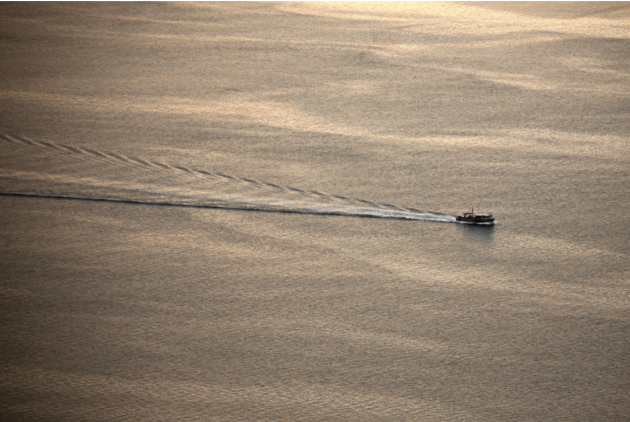
Trump Order Will Aim To Roll Back a Clean Water Rule.
Is this to protect farmers and fossil fuel interests at the expense of
consumers, or does agriculture and industry have a legitimate gripe?
The New York Times reports: "
President
Trump is expected to sign an executive order on Tuesday aimed at
rolling back one of former President Barack Obama’s major environmental
regulations, a clean water rule known as Waters of the United States.
But on its own, Mr. Trump’s order will have almost no legal effect on
the sweeping rule, which was imposed in 2015, according to two people
familiar with the White House plans. An advance copy of the order was
viewed by The New York Times on Monday. The order will essentially give
Mr. Trump a megaphone to direct his new Environmental Protection Agency
administrator, Scott Pruitt, to begin the lengthy and complicated legal
process required to rewrite the rule — a process that could take longer
than Mr. Trump’s first term, legal experts said..."
Photo credit: "A
commercial fisherman crosses the Chesapeake Bay in Maryland. The clean
water rule, called Waters of the United States, authorizes the federal
government to limit pollution." Credit Jonathan Ernst/Reuters.
 Trump to Put Obama Water Pollution Rule on Chopping Block. A case of over-regulation; federal over-reach? Here's more perspective from Bloomberg: "...In
imposing the Waters of the U.S. rule, the Obama administration’s EPA
aimed to resolve decades of uncertainty over what waterways were subject
to federal regulation and oversight. In 2006, the U.S. Supreme Court
fractured over the question of whether strictly navigable waters are
subject to the Clean Water Act, or if the jurisdiction goes further.
Developers said later guidance from the EPA only injected more confusion
into permitting processes. Obama’s Waters of the U.S. rule was opposed
by dozens of states and an assortment of business and agriculture
groups, which complained it did nothing to clear up the murkiness and
took an overly expansive view of the law.
Trump to Put Obama Water Pollution Rule on Chopping Block. A case of over-regulation; federal over-reach? Here's more perspective from Bloomberg: "...In
imposing the Waters of the U.S. rule, the Obama administration’s EPA
aimed to resolve decades of uncertainty over what waterways were subject
to federal regulation and oversight. In 2006, the U.S. Supreme Court
fractured over the question of whether strictly navigable waters are
subject to the Clean Water Act, or if the jurisdiction goes further.
Developers said later guidance from the EPA only injected more confusion
into permitting processes. Obama’s Waters of the U.S. rule was opposed
by dozens of states and an assortment of business and agriculture
groups, which complained it did nothing to clear up the murkiness and
took an overly expansive view of the law..."
Buying an Electric Vehicle? A Growing List of States Will Charge You Extra Yearly Fees.
Vox has an update: "...
At the end of 2015, the Department of Energy identified nine states that levy extra yearly fees on purchasers of EVs. Since then, Michigan added a fee, so the number now stands at 10. As the Sierra Club reports,
“since the start of 2017, six states (Indiana, South Carolina, Kansas,
Tennessee, New Hampshire, and Montana) have introduced legislation that
would require EV owners to pay a fee of up to $180 a year...”
Image credit:
EV fees. (Car & Driver)
Former Trump Aid Says Renewable Energy May Be Cut. TIME.com has more details: "
A former top aide
on energy issues for President Trump's transition speculated that the
Administration will cut research funding for wind and solar power and
redirect money to fossil fuels. Energy lobbyist Mike McKenna, who headed
Trump's Department of Energy transition team until late November, told
the West Virginia Coal Association that current funding allocations
favoring renewable energy would likely be changed. "The young people
have a word for it, it's not sustainable," he said, alluding to the
agency that crafts the President's budget. "If DOE doesn’t take care of
that on it’s own accord, the Office of Management and Budget almost
certainly will..." (File photo: Joe McNally, NatGeo).

The Mobile Solar Boom is Just Beginning. Solar can pull people out of energy poverty faster/cheaper/cleaner. A principal in the company
Lumos explains at
TheHill: "...
Lumos
brings affordable, accessible, and reliable solar energy to off-grid
homes. By partnering with mobile operators, Lumos allows customers to
pay for their electricity with existing mobile phone accounts. I believe
that this is the solution for the billion people who are living with a
mobile phone and without reliable electricity. For only 50 US cents a
day, customers can power lights, a fan, a tv, mobile chargers, and small
appliances all at the same time. For decades, these off-grid
communities have been underserved. With Lumos and mobile operators
working together, students are able to do homework at night,
entrepreneurs can keep stores open after dark, health clinics and
religious centers can further their mission, and billions of people are
able to connect to one another with cellphones they previously couldn’t
reliably charge..."

No, Cell Phones Don't Cause Cancer. Probably. There is risk every time you fall out of bed in the morning, but is using a smart phone an acceptible risk?
WIRED reports: "...
A
lot of people were really concerned when they heard the United Nations
cancer agency has declared that cellphones might cause cancer,” says
Brawley. “But when you realize that lipstick, pickles, and styrofoam are
on that list, it puts it into a different perspective.” None of those
things are necessarily super high-risk—the IPRC designation just leaves
open the possibility that some carcinogenicity exists.
In other words, a dearth of data means that no one would conclude right
now that that cellphones cause cancer. “I think it’s an unsettled
question, it’s a legitimate question,” Brawley says. “I believe the
answer is no.” After all, he notes, brain tumor rates haven’t increased
over the last 40 years. “However, none of us can tell you what the 30 or
40 year experience of people using cellphones will be,” he adds,
“because we haven’t had cellphones that long...”
SpaceX Plans to Send 2 Tourists Around Moon in 2018. Serenaded by Pink Floyd as they travel around the dark side of the moon? Sign me up (and have someone else pay for it).
The New York Times reports: "
SpaceX, the ambitious rocket company headed by Elon Musk, wants to send a couple of tourists around the moon and back to Earth
before the end of next year. If they manage that feat, the passengers
would be the first humans to venture that far into space in more than 40
years. Mr. Musk made the announcement on Monday in a telephone news
conference. He said two private individuals approached the company to
see if SpaceX would be willing to send them on a weeklong cruise, which
would fly past the surface of the moon — but not land — and continue outward before gravity turned the spacecraft around and brought it back to Earth for a landing..."
Image credit: "A rendering of the SpaceX Falcon Heavy rocket that may be used to launch two people on a journey around the moon." Credit SpaceX.
Minnesota: 3rd Best State in the USA? I beg to differ, but
U.S. News has Massachusetts and New Hampshire ahead of the Land of 10,000 Lakes: "...
In addition to its harsh winters, the state is known for its many bodies of water,
which eventually flow into the Hudson Bay, the Atlantic Ocean and the
Gulf of Mexico. The headwaters of the Mississippi River start in
northern Lake Itasca, where loons serenade at sunset. The Dakota fittingly named the land “Minisota,” meaning sky-tinted water. The state’s nickname as the Land of 10,000 Lakes is an understatement – the state actually boasts 11,842. Minnesota’s population is expected to reach 6 million by 2032. The state’s demographics will likely shift over the next couple of decades, moving toward an older and more diverse
population. Minnesota’s 65 and older population, demographers say, will
outnumber people 17 and younger for the first time in 2035.
Additionally, Minnesota’s nonwhite and/or Latino population is expected
to rise to 25 percent, up 11 percent from 2005..."
Check Out a Chocolate Museum in Barcelona, Spain. No, you can't taste the displays.
Atlas Obscura has the sweet details: "
Five hundred years ago, chocolate in the form of cocoa beans first came ashore in Europe. Coming into port in Spain,
Hernan Cortes and his conquistadors brought the spiced treat with them
after pillaging the Mayan and Aztec empires of Central America, where
cocoa beans had been used to create chocolate variants for over 3,000
years. In honor of this trans-Atlantic transfer, the Barcelona
Confectionary Guild has set up the Chocolate Museum to tell the story
of chocolate and its modernization. Although the history section of the
museum is in no way perfect, visitors get a general trajectory of
chocolate’s evolution, moving from bitter water, to the stunningly
detailed sculptures that fill the museum. By using the statues to
visibly depict the modern use of chocolate innovation, the arc of the
history of chocolate feels fairly complete..."
TODAY: Slushy start - 1-3" early, snow tapers to flurries. Winds: NW 8-13. High: 35
WEDNESDAY NIGHT: Leftover clouds, chilly. Low: 22
THURSDAY: More clouds than sun, cold wind. Winds: NW 8-13. High: 31
FRIDAY: Partly sunny, less wind. Winds: S 7-12. Wake-up: 14. High: 36
SATURDAY: Mix of clouds and sun, milder. Winds: SE 10-15. Wake-up: 26. High: near 50
SUNDAY: Intervals of sun, early spring fever. Winds: SW 8-13. Wake-up: 37. High: 56
MONDAY: Mild start. Then blustery, colder. Chance of PM snow. Winds: NW 15-30+ Wake-up: 41. High: 45 (falling quickly)
TUESDAY: Sun returns, winds die down. Winds: NW 7-12. Wake-up: 28. High: 41
Climate Stories....
"Shell Knew": Oil Giant's 1991 Film Warned of Climate Change Danger. Details, and a link to a 2:40 video overview, courtesy of
The Guardian: "
The
oil giant Shell issued a stark warning of the catastrophic risks of
climate change more than a quarter of century ago in a prescient 1991
film that has been rediscovered. However, since then the company has
invested heavily in highly polluting oil reserves and helped lobby
against climate action, leading to accusations that Shell knew the grave
risks of global warming but did not act accordingly. Shell’s 28-minute
film, called Climate of Concern, was made for public viewing,
particularly in schools and universities. It warned of extreme weather,
floods, famines and climate refugees as fossil fuel burning warmed the
world. The serious warning was “endorsed by a uniquely broad consensus
of scientists in their report to the United Nations at the end of 1990”,
the film noted..."
Image credit:
What Shell knew about climate change in 1991
"A Sense of Despair" : The Mental Health Cost of Unchecked Climate Change. CBS News reports; here are 2 excerpts from an eye-opening story: "...
Climate
change is taking an obvious physical toll on earth: from depleted
farmland to the rise of toxic pollution to the degradation of
long-stable ecosystems to the disappearance of biodiversity and
endangered species. But looking beyond the physical, experts are also
trying to sound the alarm about the quieter, more insidious effects of climate change: namely, that global warming is threatening the emotional health of humans
worldwide. “We see a sense of despair that sets in as inevitably Mother
Nature, who we think of as our nurturing force, tells us we’re not
going to be able to survive the conditions she’s set for us,” Dr. Lise
Van Susteran, a practicing psychiatrist and expert on the dangers of
climate change on mental health, told CBS News...
The
researchers found that just one standard-deviation shift in heat or
rainfall increases the risk of a riot, civil war or ethnic conflict by
an average of about 14 percent. A similarly sized uptick in heat or rain
triggers a 4 percent increase in person-on-person violence like rape,
murder and assault..."
 6 Words That Could Go Extinct Because of Climate Change
6 Words That Could Go Extinct Because of Climate Change.
Outside Magazine reports:
Lift
Line. Noun: The queue of skiers and snowboarders waiting to board a
chairlift for a ride up the mountain at a winter resort. This winter,
ski resorts have seen record-breaking storms and crowds. So climate
threats must be a Cascadian hoax, right? No. Though colder and warmer
winters are determined mainly by fickle jet streams, global warming has
contributed to an increased number of “End of Days” storms over the past half-century. The average global temperature has risen 1.5 degrees Fahrenheit
since 1880: warmer weather means more moisture in the air, which means
more intense precipitation events. At lower elevations, another
two-degree temperature increase has the potential to turn all that fresh
powder into floods and landslides. And you may have noticed this winter
that the season is getting shorter. While there might be a few epic days in the middle of winter, there’s less time on either end of winter..."
Photo credit:
"Many glacier tips are attached to an unmoving sliver of ice called an "icefoot." Photo: Oskari Porkka/iStock.
With Climate Change California is Likely to See More Extreme Flooding. NPR has the story; here's a clip that caught my eye: "...
But
this shouldn't be a surprise, says Noah Diffenbaugh, a climate
scientist at Stanford University. "It's actually exactly what has been
predicted by scientists for at least 30 years," he says. He says
California is likely to see more extreme flooding with climate change.
And the reason is pretty simple. If it's warmer, storms produce more
rain instead of snow. But that's not what California's water system was
built to do when it was designed a century ago. It was built, in large
part, around the snowpack in the Sierra Nevada. The state's flood system
can handle that slow melt, but not a huge amount of rain all at once,
Diffenbaugh says..." (File image credit: ESA).
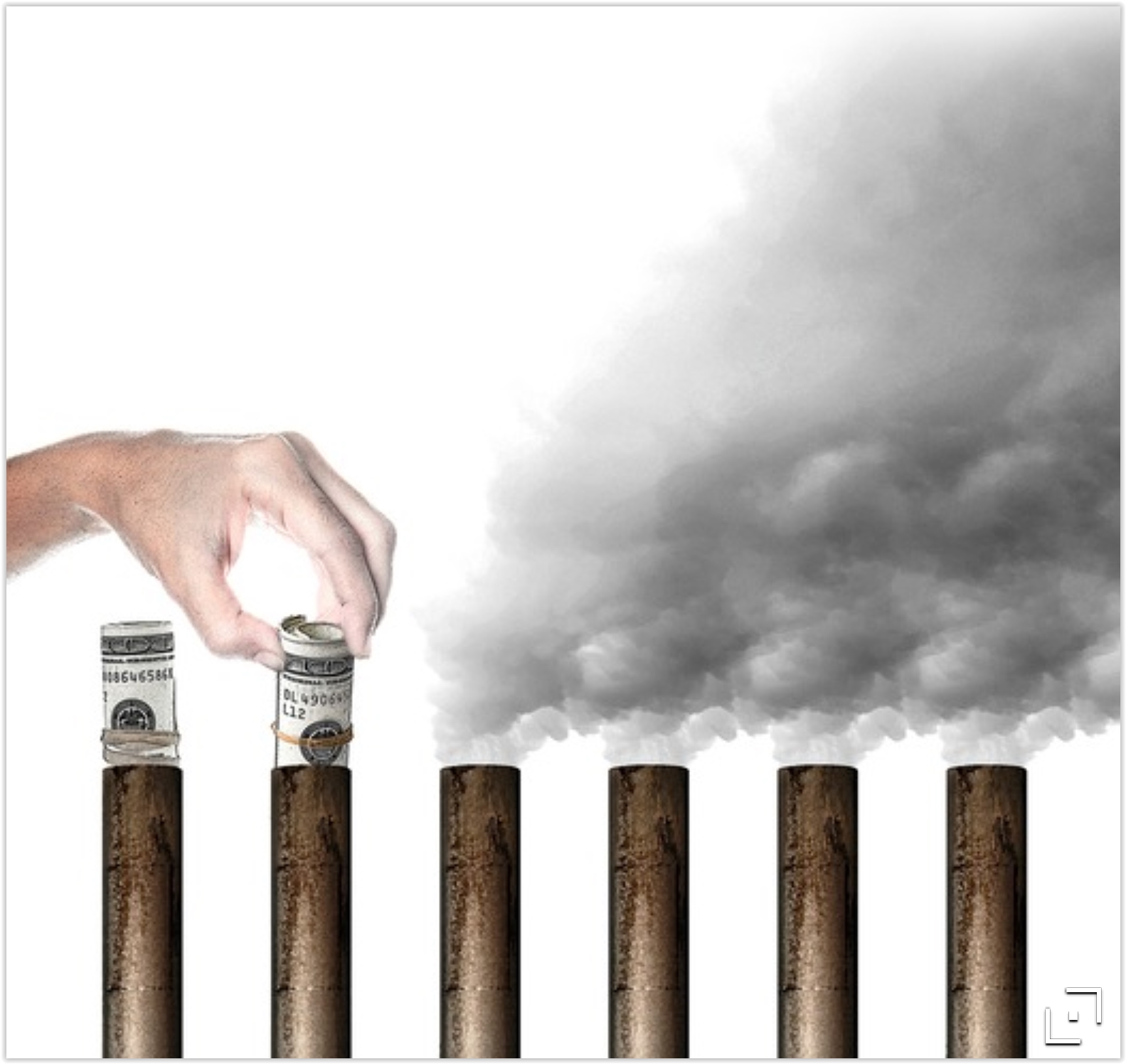 What is Wrong With a Carbon Tax?
What is Wrong With a Carbon Tax? The author of a
Scientific American Op-Ed (who happens to be an economist) argues for a cap and dividend approach, instead of tax and dividend: "...
The
upshot is that a carbon tax is not only a nonstarter in terms of good
political optics, but also in terms of good economics, ethics and
science. That said, while the CLC should ditch the tax, the public
dividend component of their plan is worth keeping. As they convincingly
argue, the dividend is a brilliant way to overcome political resistance
to a carbon fee by giving every American with a social security number
an immediate economic stake in the program. For example, the CLC
estimates that at their suggested $40/ton level, “a family of four would
receive approximately $2000 in carbon dividend payments in their first
year.” As with social security, payouts would go to rich and poor alike,
thus generating sufficient popularity to protect the program against
shifting political winds..." (File image: Star Tribune)
American Kids Are About to Get Even Dumber When It Comes to Climate Science. When facts become option and science ranks right up there with opinion. Here's an excerpt of a post at Fusion and
Motherboard: "...
Science
defenders like the NCSE say science denial has three pillars: That the
science is uncertain; that its acceptance would have bad moral and
social consequences; and that it's only fair to present all sides. All
three are at work in the latest efforts to attack state and federal
education standards on science education, Branch said. According to a
survey published last year, this strategy is already making headway. The
survey, in the journal Science,
found that three-fourths of science teachers spend time on climate
change instruction. But of those teachers, 30% tell their students that
it is "likely due to natural causes," while another 31% teach that the
science is unsettled. Yet 97% of scientists who actively study Earth's climate say it is changing because of human activity..." (Image credit: Shutterstock).
Scientists Are At The Vatican Discussing How To Save the Planet. It Could Get Depressing. Here's a clip from a summary at
Fusion: "...
With
a net of 250,000 extra people added every day now, the challenges for
maintaining any reasonable level of biological diversity into the next
century continue to mount. “In about 1970 we were using about 70% of the
Earth’s sustainable capacity, and now that we are using about 156%,”
state the conference organizers. “Nevertheless there are 800 million
people chronically malnourished and 100 million on the verge of
starvation at any one time.” Some of the biggest challenges to
biodiversity are land clearing for agriculture and urban development;
invasive species; unsustainable consumption of plant and animal species;
and global climate change..."
How a Capitalist Should Tackle Climate Change. Ted Halstead has an Op-Ed at
Fortune: "...
In The Conservative Case For Carbon Dividends,
my co-authors James Baker, George Shultz, Henry Paulson, Martin
Feldstein, Gregory Mankiw, Tom Stephenson, Rob Walton and I propose a
distinctly capitalist solution to climate change. Capitalism is a
wonderful system, even though – like many operating systems – it suffers
from an occasional bug. The most significant is that market prices fail
to take social and environmental costs into account, which explains why
greenhouse gas emissions have reached dangerous levels. The obvious
remedy is taxing pollution. Indeed, our solution boils down to getting
the price signals right, and the government out of the way.Our statement
should put to rest several myths that impede a more ambitious and
coherent American climate response. First, it shows that Democrats have
no monopoly of concern about protecting our climate. Contrary to the
easy characterization of Republicans as climate deniers, many Republican
leaders take seriously the risk of climate change, and a good number
are looking for the right opportunity to orchestrate a collective
climate jailbreak..."
To Get Ahead, Corporate America Must Account for Climate Change. Here's an excerpt of an Op-Ed at
TheHill: "...
Thinking
ahead is a competitive advantage — companies that adapt to changing
markets will survive and prosper. Of course, many of America’s top
companies have global reach, producing and selling around the world. A
U.S. presidential administration that ignores climate change will be a
short-term blip. I recommend corporate America mostly ignore that blip
and continue to develop low-carbon technologies and production
processes. They will be competitive in the emerging clean energy market
that is taking hold globally. Eventually, American companies will
prosper domestically when science-based evidence undergirds policy
initiatives again. For the U.S. to be a haven for forward-looking
companies, it needs to lead on climate change, not deny that it is
happening..."
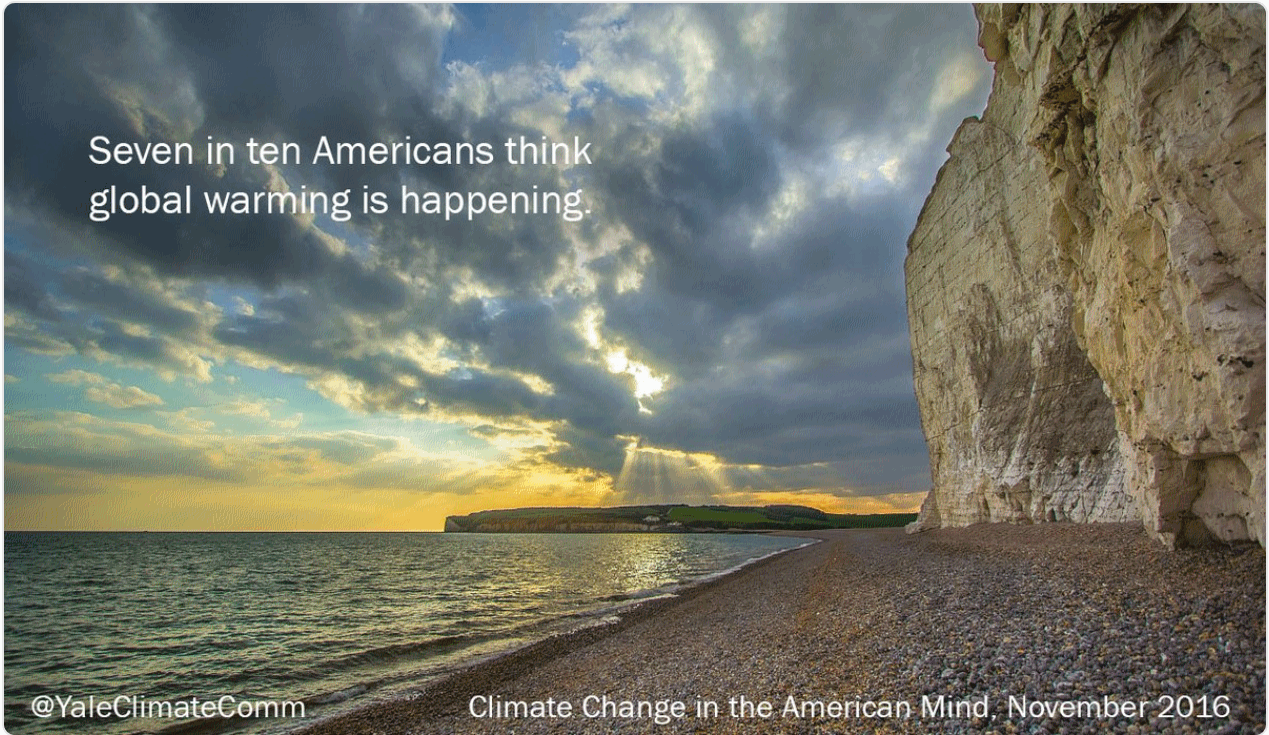
South Florida Continues Prep for Sea Level Rise. Here's the intro to a story at
SunSentinel: "
South
Florida is taking more steps to protect against climate change and the
rising seas that already are spilling over into neighborhoods. This
month, Broward County ordered that new flood maps be drawn using
predictions of higher waters, the latest in a series of steps taken from
Palm Beach County to the Keys. Fort Lauderdale raised the required
height of sea walls and the elevation of home sites; Delray Beach
added valves to keep salt water out of the city drainage system;
Broward County put a financing program in place for homeowners who want
to tap solar energy. That doesn’t mean Florida is all ready and set for
the ill effects of rising global temperatures. A nationally recognized
advocacy group that rated states on preparedness gave Florida a C- ..."
Photo credit: "
Flooding from seasonal king tides has worsened in Fort Lauderdale as a result of sea-level rise." (Joe Cavaretta/Sun-Sentinel)
For Some Arctic Plants, Spring Arrives Almost a Month Earlier. Here's an excerpt from
The New York Times: "
Every
spring, Arctic plants rely on cues from the environment — like warmer
weather, longer days and shrinking ice sheets — to tell them when they
should awaken from winter’s slumber. But as the climate warms, these
plants are getting mixed signals about when to rouse. In a new paper
published in Biology Letters, researchers detail findings from a
12-year study of when plant species in the low Arctic region of
Greenland first bud in the spring. Timing varied from plant to plant,
but one speedy sedge species — a flowering, grasslike herb — stirred a
full 26 days earlier than it did a decade ago. The change corresponds to
nearly an entire growing season, and breaks the record for the greatest
shift in spring-bloom timing that the scientists have observed in the
Arctic..." (File photo credit: Arctic Journal).

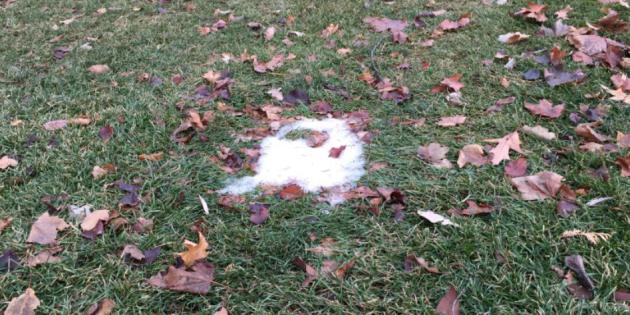


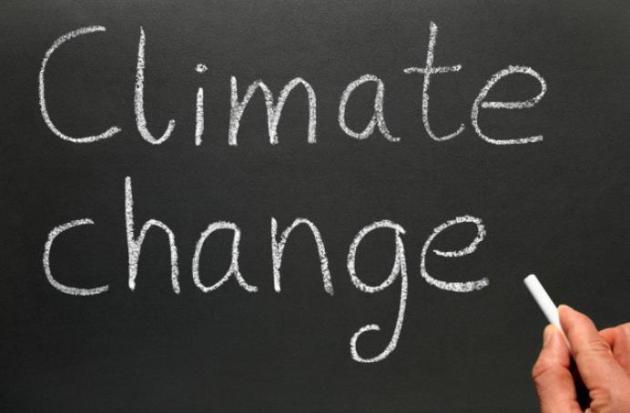


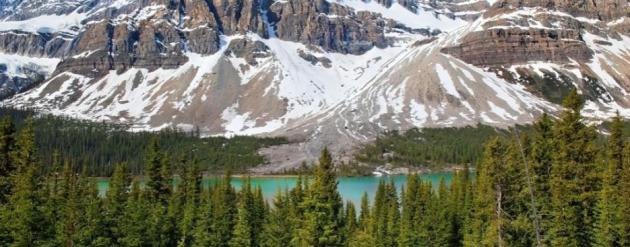
No comments:
Post a Comment